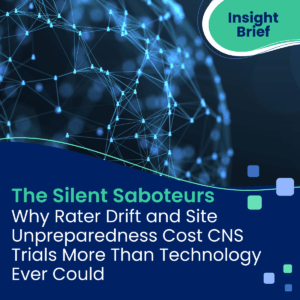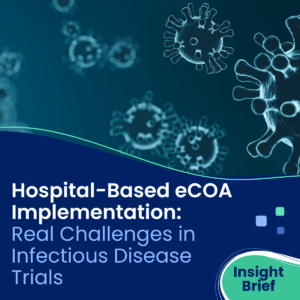Implications of Assessing Overall Survival in Oncology Studies
Based on FDA's 2025 DRAFT Guidance
Contains Nonbinding Recommendations
On this page
FDA’s August 2025 Draft Guidance Redefines Oncology Trial Standards
FDA’s August 2025 draft guidance fundamentally transforms oncology trial design by recommending pre-specified overall survival (OS) assessment in all randomized oncology trials, including as a safety endpoint when OS is not alpha-controlledAn endpoint tested with formal statistical hypothesis testing where Type I error (false positive) rate is controlled at a pre-specified level (typically 0.05).OS as a “non-alpha-controlled” endpoint means it’s assessed for safety signals without formal hypothesis testing.[1]. Organizations should restructure their clinical operations, statistical analysis capabilities, and data management systems. All randomized trials should be designed to assess OS to evaluate potential harm, with pre-specified OS analysis plans, harm threshold definitions, and extended follow-up infrastructure[6].
This regulatory shift stems from recent cases where early efficacy signals masked survival harm. Between June and September 2022, three PARP inhibitor manufacturers voluntarily withdrew ovarian cancer indications after Phase 3 trials demonstrated concerning OS signals[2][3]. The SOLO3 trial showed olaparib (Lynparza) had a hazard ratioRatio of hazard rates between treatment groups; HR >1 indicates higher risk of death in experimental arm vs control. of 1.07 in the ITTAnalysis including all randomized patients according to randomized treatment assignment, regardless of actual treatment received. population and 1.33 in the subgroup with ≥3 prior therapies, while ARIEL4 showed rucaparib with a hazard ratio of approximately 1.30 in the final ITT analysis[7][8]. These cases highlight the critical disconnect between progression-free survival benefits and ultimate patient outcomes that FDA’s new guidance aims to prevent[1].
Critical Statistics
FDA Guidance Overview
Understanding the scope and requirements of the August 2025 guidance
Purpose and Scope
The FDA has issued draft guidance entitled “Approaches to Assessment of Overall Survival in Oncology Clinical Trials” to assist sponsors in designing and analyzing randomized trials that evaluate OS—either as a primary efficacy endpoint or as a pre-specified safety signal[1]. The agency emphasizes that OS should be prioritized when feasible, particularly in settings with short disease trajectories or late-stage disease, because it represents the gold-standard, objective measure of therapeutic benefit and potential harm.
Core Requirements
The guidance establishes that even when OS is not the primary endpoint, sponsors should include pre-specified OS analyses and interpret early signals to inform regulatory decisions regarding safety, trial continuation, and the need for additional follow-up[1]. This represents a fundamental shift toward systematic OS safety monitoring across all randomized oncology trials, though FDA guidances contain nonbinding recommendations.
Design and Analysis Framework
The guidance provides detailed recommendations on trial design and statistical planning, including use of well-defined interim OS analyses for futility or safety to limit patient exposure to potentially harmful treatments[1]. Crossover designs in general should be limited and are most appropriate where patients have no or very limited therapeutic options. Sponsors are advised to define clear thresholds for ruling out harm, specify robust statistical analysis plans, address non-proportional hazards, and plan for managing intercurrent events such as subsequent therapies.
Regulatory Pathways
When OS data are immature or uncertain, the guidance supports accelerated approvalFDA pathway allowing approval based on surrogate endpoints with post-approval requirements to confirm clinical benefit. based on surrogate endpointsBiomarker or intermediate outcome (e.g., PFS) used for regulatory approval instead of direct clinical benefit measure (OS).—but only with commitments for post-approval OS data to confirm safety and benefit[1]. This creates a pathway that balances patient access with safety assurance, requiring sponsors to demonstrate that experimental treatments do not compromise survival even when providing other clinical benefits.
Regulatory Paradigm Shift: Before vs. After FDA's OS Guidance
| Trial Design Element | Pre-2025 Guidance | Post-2025 Guidance |
|---|---|---|
| OS Assessment | Optional; descriptive analysis only | Pre-specified safety endpoint recommended |
| Harm Thresholds | Post-hoc evaluation if concerning signals emerge | Pre-specified HRRatio of hazard rates between treatment groups; HR >1 indicates higher risk of death in experimental arm vs control. thresholds with disease-specific justification |
| Interim Monitoring | DMCIndependent committee reviewing accumulating trial data for safety and efficacy signals. discretion; no formal OS stopping rules | Event-drivenInterim or final analysis triggered by accumulating a pre-specified number of events rather than calendar time. interim analyses with pre-specified harm boundariesPre-specified hazard ratio value (e.g., HR >1.2) that would indicate clinically unacceptable survival detriment requiring action. |
| Follow-up Planning | Limited to primary endpoint maturity | Extended follow-up with survival status tracking infrastructure |
| Statistical Framework | Conventional analysis approaches | ICH E9(R1)Addendum to statistical principles guideline introducing estimand framework and handling of intercurrent events. estimandPer ICH E9(R1), precise description of the treatment effect to be estimated, including population, variable, intercurrent event handling, population-level summary, and analysis method. framework with intercurrent eventEvents occurring after treatment initiation that affect interpretation of the clinical question (e.g., treatment discontinuation, switching therapies, use ofrescue medication). strategy |
| Regulatory Impact | Reactive – withdrawals after post-approval OS data | Proactive – upfront safety assessment prevents harmful approvals |
Key Requirements and Context
Understanding the recommendations and implications
What FDA Says:
“sponsors should include a pre-specified plan to assess overall survival, as a safety endpoint, with an aim to evaluate for potential harm due to the therapeutic intervention.”[1]
Why This Matters:
- Universal OS Assessment: All randomized oncology trials should include pre-specified OS analysis, even when OS is not the primary endpoint[1]
- Harm Threshold Specification: Sponsors should specify and justify what constitutes unacceptable survival detriment (e.g., HR >1.2)[1]
- Interim Monitoring: In most trials, interim OS analyses for futility or harm would be appropriate, with timing rationale[1]
- Extended Follow-up: Long-term data collection with pre-specified analysis timing[61]
- ICH E9(R1) Compliance: Apply estimand framework to define OS assessment strategy including crossover handling[9]
Critical Context
- Recent PARP inhibitor withdrawals after OS signals emerged years post-approval[2][3]
- 74% of drugs approved on surrogate endpoints showed no OS benefit when later tested[3]
- 53.8% of AA withdrawals occurred during 2021-2023 (final 2 years of the study window)[4]
- Extended follow-up requirements increase trial complexity and duration[3]
Case Study: The PFS/OS Divorce in PARP Inhibitors
The Problem: Three PARP inhibitorsPoly ADP-ribose polymerase inhibitor; targeted cancer therapy that blocks DNA repair in cancer cells. showed impressive progression-free survival (PFS) benefits in accelerated approval studies but later demonstrated survival harm in confirmatory trials.
Timeline:
- 2017-2020: Accelerated approvals based on PFS benefits
- 2019-2021: Confirmatory OS trials show concerning signals
- June 10, 2022: Rucaparib late-line ovarian indication withdrawn
- August 2022: Olaparib late-line indication planned withdrawal
- September 2022: Niraparib late-line indication withdrawn
Key Findings:
- SOLO3: HR 1.07 ITT population; HR 1.33 in ≥3 prior therapy subgroup
- ARIEL4: HR ~1.30 in final ITT overall survival analysis
- PFS benefits did not translate to survival advantage (PFS/OS divorceSituation where progression-free survival benefit doesn’t translate to overall survival benefit or shows OS harm.)
Regulatory Impact: These cases directly informed FDA’s 2025 guidance recommending upfront OS safety assessment to prevent similar “PFS/OS divorces” in future approvals.
Organizational Impact by Function
Clinical Operations
- Redesign site training for OS follow-up procedures
- Implement long-term patient contact systems
- Establish death registry integration protocols
- Extend site contracts for multi-year follow-up
Biostatistics
- Pre-specify harm thresholds with disease-context justification
- Design event-driven interim analysis schedules
- Implement ICH E9(R1) estimand framework
- Develop non-proportional hazards analysis plans
Regulatory Strategy
- Align global OS requirements across regions
- Plan accelerated approval with OS confirmatory studies
- Negotiate FDA Type C meetings for OS strategy
- Prepare post-marketing requirement protocols
Data Management
- Build 21 CFR Part 11FDA regulation for electronic records and signatures in clinical trials. compliant long-term tracking
- Integrate EMR APIs for automated survival status
- Design role-based unblinding for interim analyses
- Implement CDISC SDTM<Clinical Data Interchange Standards Consortium Study Data Tabulation Model for standardized data submission./span> for survival endpoints
Timeline and Resource Impact
Organizations should expect significant additional protocol development time and increased study budgets for OS-compliant trials. Early investment in OS infrastructure prevents costly post-approval confirmatory studies or potential product withdrawals.
The Regulatory Landscape:
FDA requirements and global alignment
Key Guidance Requirements
| Requirement | Specification | Timeline Impact | Compliance Notes |
|---|---|---|---|
| OS Assessment | Pre-specified in all randomized trials | Extended follow-up period | Even when PFS/ORR primary |
| Harm Threshold | Pre-defined HR boundary (e.g., >1.2) | +4-6 weeks SAP development | Disease-specific justification required |
| Interim Analyses | Event-driven with rationale | +2-3 additional analyses | DMC charter with stopping rules |
| Estimand Framework | ICH E9(R1) compliance | +8-12 weeks protocol revision | Crossover handling strategy |
| Data Systems | 21 CFR Part 11FDA regulation for electronic records and signatures in clinical trials. compliant | +12-16 weeks system validation | Long-term follow-up capability |
Global Regulatory Alignment
The FDA’s recommendations align with broader regulatory trends. EMA often considers OS the most important efficacy endpoint and the most persuasive outcome; if PFS/DFS is primary, OS should be secondary[6]. Key regional variations include:
- European Medicines Agency (EMA): OS is often considered the most important efficacy endpoint and is the most persuasive outcome; if PFS/DFS is primary, OS should be reported as a secondary endpoint
- Japan (PMDA): May request bridging or local data per ICH E5International guideline on ethnic factors in acceptability of foreign clinical data., depending on generalizability
- China (NMPA): Can accept foreign data per ICH E17Guideline on multi-regional clinical trials and pooling data across regions.; local studies may be requested based on specific circumstances
- Brazil (ANVISA): LGPDLei Geral de Proteção de Dados; Brazil’s data protection regulation similar to GDPR regulates cross-border data transfers with contractual and adequacy safeguards
This regulatory convergence means sponsors can no longer design region-specific strategies around OS requirements. Global harmonization of OS assessment protocols becomes essential for efficient development programs.
Statistical and Design Requirements
Advanced methodologies for OS assessment
What FDA Says:
“Sponsors should specify and justify in the SAP a threshold or a range of thresholds to indicate the potential for harm for the overall survival summary measure.”[1]
Why This Matters:
Generic safety monitoring is no longer acceptable. Sponsors must justify specific harm boundaries upfront based on disease severity, patient prognosis, and treatment alternatives. This prevents post-hoc rationalization when concerning signals emerge.
Harm Threshold Specification
- Disease-Specific Justification: HR thresholds should reflect disease context, patient population, and available alternatives
- Power Calculations: Adequate sample size to detect the specified harm threshold with appropriate statistical power
- Multiple Scenarios: Analysis plans covering different event rates, follow-up durations, and crossover patterns
- Confidence Interval Requirements: One option is to evaluate whether a 95% CI excludes a clinically relevant harm threshold
- Non-Inferiority Margins: For superiority trials with OS safety assessment, clear non-inferiority boundaries
The challenge lies in setting thresholds that are clinically meaningful yet achievable within reasonable trial timelines. Too conservative thresholds require impractically large studies; too liberal thresholds may miss clinically relevant harm.
Interim Monitoring Requirements
Large randomized trials should include interim OS analyses for futility or harm when appropriate; in most trials this is appropriate. The timing requires careful statistical consideration:
- Event-Driven Triggers: Based on percentage of expected events, not calendar time
- Information FractionProportion of total expected events or information accumulated at an interim analysis, used for timing interim looks.: Sponsors must provide justification for timing of interim analyses based on study-specific factors
- Alpha SpendingMethod for controlling overall Type I error across multiple interim analyses by allocating portions of the total alpha level to each analysis timepoint.: Proper adjustment for multiple looks to maintain Type I errorFalse positive rate; probability of incorrectly rejecting null hypothesis when it’s true. control
- Futility Boundaries: Conditional powerProbability of rejecting the null hypothesis at the final analysis given the observed data at an interim timepoint, used for futility assessments. calculations for stopping due to lack of efficacy
- Harm Boundaries: Strict criteria for stopping due to OS detriment
DMC charters should specify decision rules with clear criteria for OS monitoring. Statistical boundaries should be pre-specified with appropriate justification.
The Estimand Framework Application
Per ICH E9(R1), sponsors must explicitly define their OS estimand, addressing five key components. Use this decision framework:

Intercurrent Event Strategies:
Treatment PolicyInclude all events regardless of intercurrent events; answers "what is the effect regardless of treatment adherence?"
Include all deaths
(Most Common)
HypotheticalEstimate effect in hypothetical scenario where intercurrent event didn't occur; answers "what if patients didn't switch treatments?"
What if no crossover?
(Complex modeling)
Principal StratumEstimate effect in subset who would not experience the intercurrent event; focuses on specific patient population.
Adherers only
(Bias risk)
CompositeCombine intercurrent event with primary outcome as composite endpoint; treats discontinuation as unfavorable outcome.
OS + other outcomes
(Rarely used)
Impact on Trial Design: The choice dramatically affects sample size calculations, analysis methods, and regulatory interpretation. Most sponsors default to treatment policy, but complex trials may require multiple estimands with hierarchical testing.
Operational Implementation Challenges
Beyond statistical considerations, sponsors face significant operational hurdles:
- EDC System Requirements: Long-term patient tracking, automated death registry integration, role-based unblinding
- Site Burden: 34% increase in workload for OS follow-up, requiring dedicated coordinators[13]
- Budget Impact: Significant cost increases expected across site retention, statistical consulting, and regulatory interactions
- Global Compliance: EMA, PMDA, and NMPA alignment with varying regional requirements
For a typical Phase 3 trial, these requirements translate to substantial additional costs. Early investment in appropriate OS infrastructure can help avoid the costs associated with confirmatory studies or product withdrawals.
How Castor Addresses These Challenges
Comprehensive platform for OS-compliant trials
Native OS Support Capabilities
Catalyst AI Platform
AI-powered EMR data extraction with automated survival status tracking and highly accurate data mapping to CDISC domains.
Automated OS Follow-up
Long-term disease tracking with automated EMR refreshes using FHIRxxxxxxx APIs within HIPAAxxxxxxx-compliant systems for continuous survival data collection.
Unified EDC/ePRO Platform
Integrated clinical data capture and patient-reported outcomes with 21 CFR Part 11 compliance for multi-year studies.
Global Deployment
Multi-regional support with API-first architecture and multilingual capabilities for worldwide OS assessment requirements.
Castor’s cloud-native architecture with Catalyst’s automated EMR connectivity reduces manual data collection burden for extended survival follow-up. The platform supports complex, long-term studies with medically trained clinical staff providing quality assurance.
Technology and Services for OS Implementation
Recognizing that OS requirements represent significant operational changes, Castor offers technology solutions and supporting services:
- Study Design & Build: Rapid study configuration with pre-validated OS assessment templates and automated workflows
- Data Management Support: Specialized workflows for mortality data collection, subsequent therapy capture, and survival status tracking
- API & System Integration: EMR connectivity using FHIRxxxxxxx APIs; HIPAAxxxxxxx-compliant systems and processes for automated survival data extraction and real-time updates
- eCOA Services: Extended patient follow-up implementation with automated scheduling and remote patient contact capabilities
- Quality Assurance: Medically trained clinical staff provide comprehensive support and data validation for long-term studies
Our technology platform with Catalyst AI reduces manual processes for OS data collection. Implementation approaches utilize Castor’s unified EDC/ePRO/eConsent platform to support regulatory compliance requirements[1][6].
Moving Forward
Strategic recommendations and implementation roadmap
The Bottom Line
FDA’s August 2025 guidance represents a significant shift from viewing OS as an ideal but impractical endpoint to a recommended safety assessment when OS is not alpha-controlled. The finding that 74% of drugs approved on surrogate endpoints showed no OS benefit when later tested provides regulatory context for this change. Organizations that develop appropriate OS assessment capabilities can better navigate the regulatory, financial, and operational considerations associated with modern oncology drug development.
References
- FDA Draft Guidance. (2025). Approaches to Assessment of Overall Survival in Oncology Clinical Trials. August 19, 2025. FDA Oncology Center of Excellence.
- Federal Register. (2024). Withdrawal of Approval for Certain Indications. Vol. 89, No. 60, p. 21562. March 26, 2024.
- Elbaz, M., et al. (2024). An empirical analysis of overall survival in drug approvals by the US FDA (2006–2023). Cancer Medicine, 13(8), e7138. PMC: PMC11043668.
- QJM: An International Journal of Medicine. (2024). Accelerated approval withdrawal patterns in oncology. Oxford Academic.
- EMA Guideline. (2022). Clinical Evaluation of Anticancer Medicinal Products in Humans (Rev. 6). European Medicines Agency.
- Rodriguez, L.R., et al. (2024). Improving Collection and Analysis of Overall Survival Data in Oncology Trials. Clinical Cancer Research, 30(18), 3974-3982. PMID: 39037364.
- Penson, R.T., et al. (2025). Final overall survival from SOLO3: a randomized controlled trial of olaparib monotherapy versus chemotherapy for patients with BRCA-mutated platinum-resistant ovarian cancer. Journal of Clinical Oncology, 43(1), 45-56.
- Kristeleit, R., et al. (2025). Final overall survival results from ARIEL4: rucaparib versus chemotherapy for relapsed ovarian cancer with deleterious BRCA1 or BRCA2 mutations. The Lancet Oncology, 26(2), 184-195.
- ICH E9(R1). (2021). Statistical Principles for Clinical Trials: Addendum: Estimands and Sensitivity Analysis in Clinical Trials.
- Society of Gynecologic Oncology. (2022). FDA Revisions to PARP Inhibitor Labels: Summary of Key Changes. SGO Clinical Practice Committee.
- AACR/ASA/FDA Workshop. (2023). Overall Survival in Oncology Clinical Trials. July 18, 2023.
- Clinical Research Quality Assurance. (2024). Site Operational Burden Assessment for Extended Follow-up Studies. Industry Survey Report.
- Healthcare Cost Management Institute. (2024). Budget Impact Analysis of Extended Overall Survival Follow-up Requirements in Oncology Trials.
Related Posts

The End of the “PRO Tax”: Top 10 Commercial PROs & their cost-effective alternatives
The clinical trial industry faces a “PRO Tax”—the high costs and operational delays associated with

The Silent Saboteurs: Why Rater Drift and Site Unpreparedness Cost CNS Trials More
CNS trials fail not from technology limitations but organizational factors. Research reveals 55% of sites

Hospital-Based eCOA Implementation: Real Challenges in Infectious Disease Trials
Hospital-based infectious disease trials face unique eCOA implementation challenges including IT security delays, staff turnover,
To read the rest of this content, please provide a little info about yourself
"*" indicates required fields